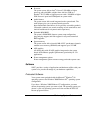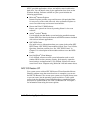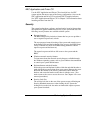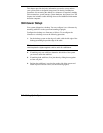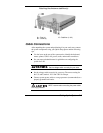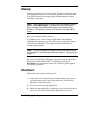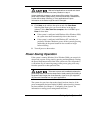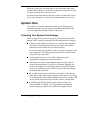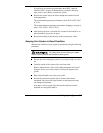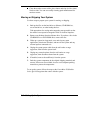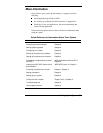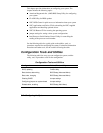
Setting Up the System 2-5
Wait until all applications are saved and closed
before using the Windows shut down procedure in step 4.
Unless absolutely necessary, never power off the system if the system
power lamp is amber (sleep mode), if the hard drive lamp, diskette drive,
or other device lamp is flashing, or if any applications are open.
Information on the device might be lost or damaged.
4.
Click
Start
on the taskbar, then point to and click
Shut Down
.
Selecting Shut Down gives you several choices in the pop-up
submenu. Select
Shut down the computer
, then click
OK
or press
Enter
for shut down.
If the system is configured with Windows 98 or Windows 2000,
the system shuts down automatically after a short interval.
If the system is configured with Windows NT, and after you
perform a Windows shutdown, power off the system by pressing
and holding in the power button for four seconds or longer
before releasing.
5.
Turn off power to the monitor.
Power-Saving Operation
If the system is running Windows 98 or Windows 2000, you can put it in
sleep mode (a power-saving state) by pressing and immediately releasing
the power/sleep button on the front of the system unit. The sleep mode is
a convenient way of conserving energy when you are going to be away
from the system for a short period of time.
Take care to press and immediately release the
power/sleep button to enter the sleep mode. Avoid pressing and holding in
the power button longer than three seconds. If you do so, you might turn
off power and lose data from any open applications.
The system also goes into sleep mode when it has been inactive, if the
power management has been enabled in BIOS, and an inactivity timeout
has been enabled. (See Chapter 3, “Configuring Your System” for
information on setting power management functions.)



